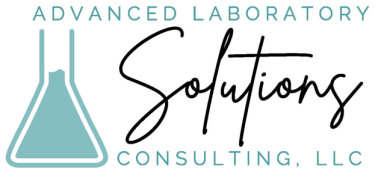
Advanced Laboratory Solutions Consulting, LLC
Bridging the Gap Blog Series
Discussion on waste plastics-to-fuel and waste plastics-to-chemicals production considerations.

One Universe Different Worlds
Bridging the Gap
Explore the Chasm
I consider myself fortunate for the decades long experience I've had, both in the analytical laboratory and in advanced instrumentation sales & business development. But the market range of this experience from resins manufacturing to oil & gas production is by far the most fascinating aspect of my career, particularly as it pertains to the chemical recycling market.
Jennifer Donelson
May 19, 2022
Advanced chemical recycling of plastics is still in its infancy, and much discussion on the politics, economic viability, etc. is ongoing. Although I pay close attention to these discussions, I focus on the seemingly great divide in the advanced chemical recycling market between those with virgin plastics production experience and those experienced in oil & gas refineries and manufacturing facilities. Since plastics are derived primarily from fossil fuels, one would imagine the umbrella of a plastics circular economy would enable each step within the recycling process - new virgin polymers, plastics products, mixed plastic feedstock, pyrolysis technology, recycled raw material - to appreciate and recognize concerns and issues with the others, but that is not the case.
Projects have experts in plastics production and knowledge in chemical recycling that do not fully understand the oil & gas industry and vice-versa. Too often, the focus on feedstock analyses and quality control processes centers on the pyrolysis oil product and ignores full compositional analysis of the feedstock itself with the vast array of variables each lot/shipment of waste plastics provides. In this blog series, I will discuss some of the issues as I see them and introduce solution pathways for effective feedstock evaluation and pyrolysis oil production support.

Would You Like Some Fries With That?
Bridging the Gap
Feedstock Variations
Before we look further into the production pathway for fuels made from chemical recycling of waste plastic, we should take a stroll down the biofuel's memory lane. Again, my focus is not on the economic viability or political implications of which fuels to use, but rather looking at the fuels through the eyes of an Analytical Chemist investigating chemical make-up vs. product quality/ performance.
Jennifer Donelson
Jun 07, 2022
Since most chemical recycling fuel products available today are blended as feedstock into petroleum refinery production streams, we are at a somewhat similar stage in chemical recycling as we are with biofuels blended into finished fuel streams. Although not a circular economy, rather an alternative energy solution, those of us familiar with the biofuels market understand the feedstock used to produce the biofuel itself, which is then blended into the petroleum diesel fuel product, absolutely affects the performance of the finished fuel even though the finished product passes the blend specifications. Of curiosity are blended fuels made with biofuel produced from used restaurant oil feedstock.
The B100 (100%) biofuel meets the ASTM D6751 specification, and the finished B6 (6% biofuel) to B20 (20% biofuel) blend subsequently passes the ASTM D7467 biodiesel spec, but the car or truck running on the biodiesel blend smells like French fries as the vehicle moves down the road. Analytical Chemists such as I want to understand how this can be. How does the transesterification process for biodiesel production and the subsequent blending of the biofuel into petroleum diesel produce a finished biodiesel blend that clearly has some flow-through of particulates and/or molecules attributed to producing the smell of used French fries?
One would believe the B100 production steps break down the odor-causing components, and perhaps they mostly do, but in practice the vehicle can still smell like a fast-food restaurant while in operation. So, something is clearly getting through.
Now let's consider the new circular waste plastics-to-fuel or waste plastics-to-chemicals market. Could a similar break-through of components - perhaps related to plastic product additives - effect the functionality and performance of the final product? Unlike a feedstock of used restaurant oil, which has limited possible ingredients within the oil feedstock due to the very nature of a consumer food product, a feedstock sourced of multiple types of plastic from multiple sources containing multiple ingredients opens an entirely new world of possibilities for contamination and/or active molecular fragments breakthrough, all of which may affect the final product quality and performance. Certainly, an area of consideration for accurately measuring the fuel and/or chemicals produced from chemical recycling feedstocks and any functional product variations caused. The adventure continues...

Feedstock Variations + Different Process Technologies --> ? Final Product ?
Bridging the Gap
Chemical Recycling Processes
We previously discussed waste plastic feedstock variation in our Bridging the Gap blog series and continue now in our journey as we consider the different chemical recycling process technologies utilized in reducing plastic waste to syngas, monomers, and pyrolysis oils which, in turn, are used as feedstocks in the production of new polymers, chemicals or fuels.
Jennifer Donelson
Aug 15, 2022
The three primary technologies include solvent purification, chemical depolymerization, and thermal depolymerization, each with their advantages and limitations in the overall chemical recycling industry. I will not discuss solvent purification in detail as it is very energy intensive and is limited to "cleaning" waste polymer by dissolving it in a suitable solvent which does not dissolve any contaminants/additives, with the output being a new polymer.
The polymer formed is not considered virgin-equivalent due to likely thermal degradation - a similar output as polymer produced through mechanical recycling - but with much less energy expended in the mechanical recycling process. As such, solvent purification can be considered the "niche" chemical recycling process. Chemical depolymerization produces monomers which are then integrated into a virgin production process, producing polymers considered virgin-equivalent but with variable production losses dependent on the specific technology utilized. Contaminants can be removed but relatively clean inputs are still required for maximum viability of the process. The products are integrated into virgin processes, may require purification before integration, and can yield output results of various utilization value. Of importance in thermal depolymerization is the significant losses of virgin-equivalence with each recycling loop. (Ref.1) A key advantage of thermal depolymerization is the ability to accept more heterogeneous waste streams, enabling traditionally unrecyclable materials to be added to the circular economy.
As the industry begins to produce in large scale polymers made via chemical recycling processes, those polymers are sure to become future (waste plastic) feedstock and we will need processes that maintain the waste utilization values while minimizing losses within each recycle loop. We will also need to continually evaluate how advances in polymer and plastics production, such as new catalysts, hardeners, dyes, etc., change the chemical recycling outputs.
The entirety of the chemical recycling market is indeed exciting, and the feedstock variations and recycling processes are of keen interest to analytical chemists such as me, particularly in how they influence/affect final product quality and functionality. We do not have all the answers yet but look forward to the journey as the industry investigates and implements solutions for the variables, both now and in the future. Advanced Laboratory Solutions Consulting, LLC is a valued partner to those in the industry, offering solutions for advanced analytical analysis, standards development, laboratory processes standardization, and more. www.alsconsulting.tech.
We need your consent to load the translations
We use a third-party service to translate the website content that may collect data about your activity. Please review the details and accept the service to view the translations.

